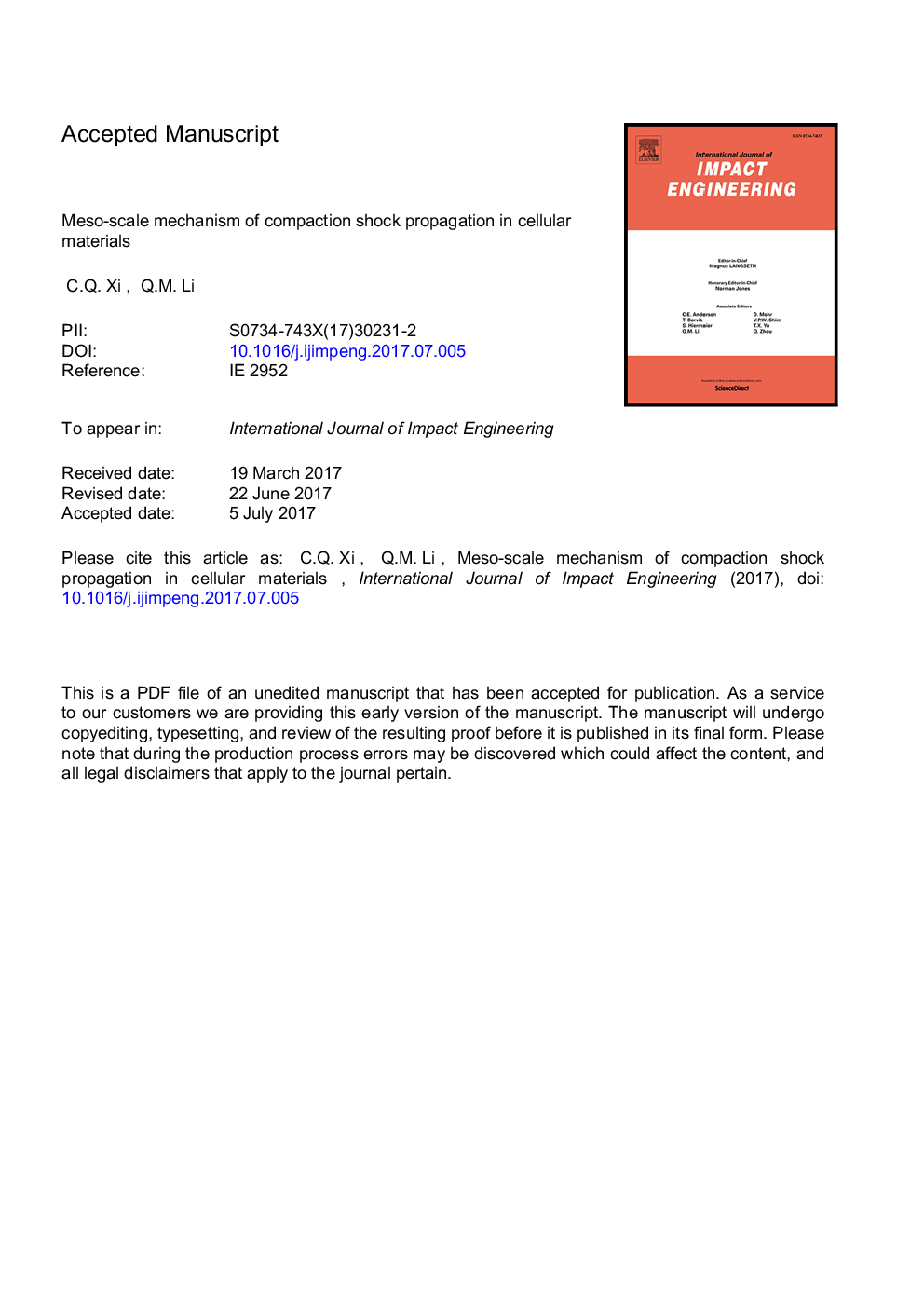| Article ID | Journal | Published Year | Pages | File Type |
|---|---|---|---|---|
| 5015443 | International Journal of Impact Engineering | 2017 | 43 Pages |
Abstract
The meso-scale mechanism of a compaction shock in a cellular material is investigated numerically using a 2D Voronoi cellular model. The compaction shock is initiated by the compression of a 2D Voronoi cellular model at constant velocities sufficiently higher than the critical shock velocity. The compaction shock is featured by the propagation of a nearly planar (1D) shock front, across which, macroscopic physical quantities (i.e. stress, strain, particle velocity and density) show strong discontinuity. The 1D cross-sectional stress in the Voronoi model is decomposed into deformation-induced stress and contact-induced stress. It shows that the contact-induced stress plays a dominant role in the shock stress enhancement in dynamic compression. It is shown that the velocity-dependent inertia term in the 1D shock stress equation derived from conservation laws in continuum mechanics is the contact-induced stress produced by the internal collisions of cell walls in meso-scale at the compaction shock front. The internal collisions accelerate the adjacent layer of cell walls to the compression velocity rapidly, and a velocity discontinuity at the shock front is formed for the next internal collision. Meanwhile, the local cell-wall acceleration leads to an inertial pulse of the deformation-induced stress, which is generally smaller than the contact-induced stress. It is found that the stress distribution in the region ahead of shock-front is non-uniform. These findings reveal the meso-scale mechanisms of the compaction shock propagation in cellular materials subjected to intensive dynamic loads.
Keywords
Related Topics
Physical Sciences and Engineering
Engineering
Mechanical Engineering
Authors
C.Q. Xi, Q.M. Li,
